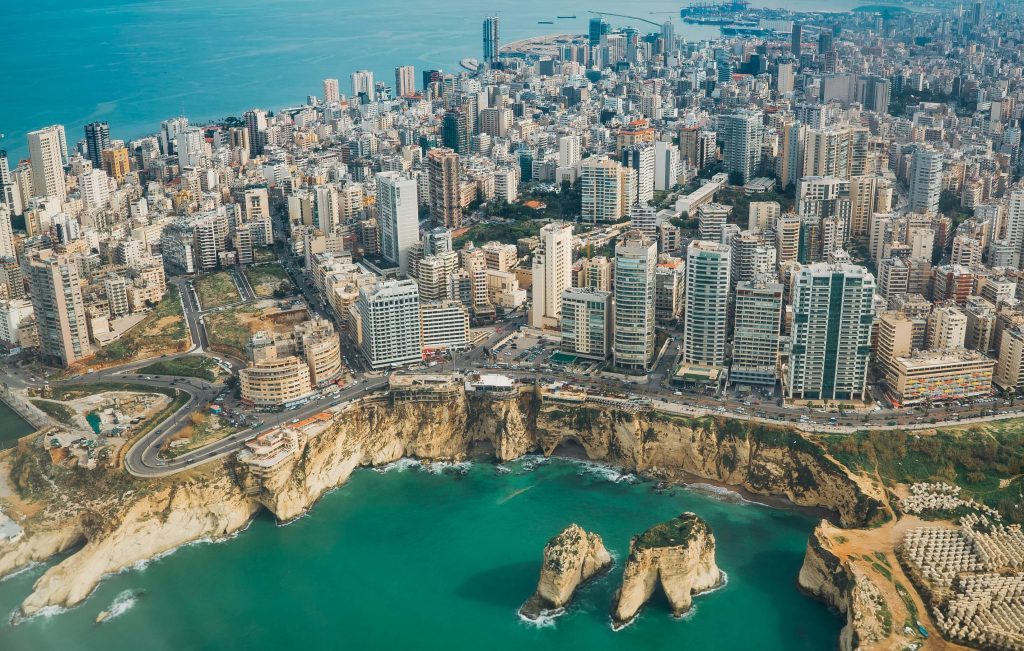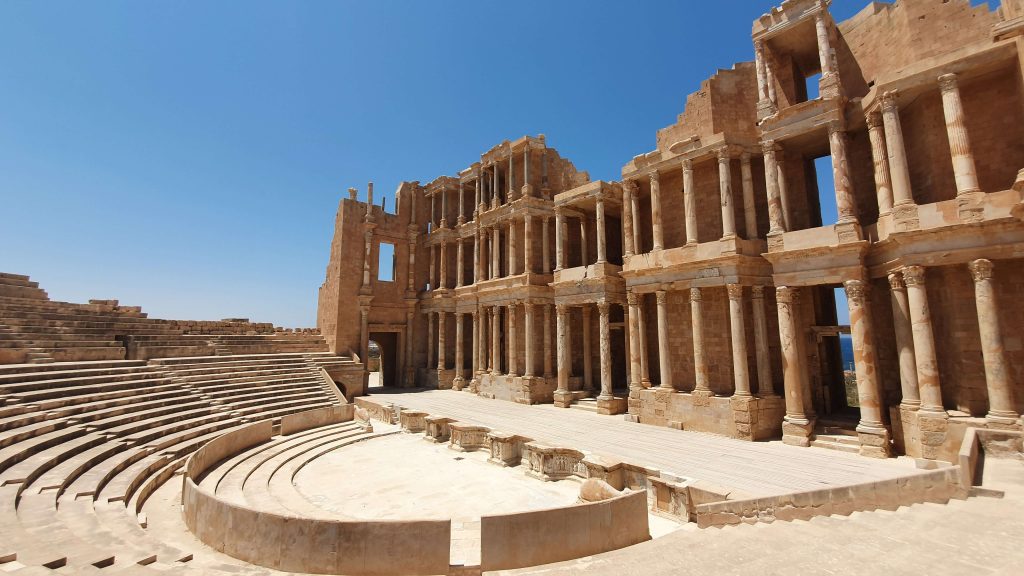Arabic offers a blend of critical language skills and is useful in over 20 countries with around 300 million native speakers. There are varieties of Arabic and there is no doubt that those who learn Arabic can live, work, and interact with a more diverse set of countries. As the Arabic saying goes, ‘awwal alshshajarat bidharr (“A tree begins with a seed.”)
A trend can be seen in the private and non-profit sectors as businesses seek to better understand developing markets, and organizations work across borders to develop institutions, improve economies, and educate young people in the Middle East and North Africa. Yet the demand for Arabic-speaking professionals in most non-Arab countries exceeds the supply.
Read on to discover the different types of Arabic and the countries where Arabic plays a key role.
Egypt
The official language of the Republic is Modern Standard Arabic. Arabic was adopted by the Egyptians after the Arab invasion of Egypt. The spoken languages are: Egyptian Arabic (68%), Sa’idi Arabic (29%), Eastern Egyptian Bedawi Arabic (1.6%), Sudanese Arabic (0.6%), Domari (0.3%), Nobiin (0.3%), Beja (0.1%), Siwi and others.
In Egypt, the colloquial expression for “How are you?” is “izzayyak”.
Morocco
Morocco’s official languages are Arabic and Berber. The country’s distinctive group of Moroccan Arabic dialects is referred to as Darija. Approximately 89.8% of the whole population can communicate to some degree in Moroccan Arabic or Maghrebi Arabic. The Berber language is spoken in three dialects (Tarifit, Tashelhit and Central Atlas Tamazight). In 2008, Frédéric Deroche estimated that there were 12 million Berber speakers, making up about 40% of the population. The 2004 population census reported that 28.1% of the population spoke Berber.
In Morocco, the colloquial expression for “How are you?” is ‘”la bas?”
Algeria
Berber and Modern Standard Arabic are the official languages. Algerian Arabic is the language used and understood by the majority of the population, and is also called locally ‘Arbiya or Dziriya. Algerian Arabic is part of the Maghrebi Arabic dialect, which fades into Moroccan Arabic and Tunisian Arabic along the respective borders.
Colloquial Algerian Arabic is heavily infused with borrowings from French and Berber. Algeria emerged as a bilingual state after 1962. Colloquial Algerian Arabic is spoken by about 72% of the population and Berber by 27–30%.
In Algeria, the colloquial expression for “How are you?” is “wac rak?”
Sudan
Approximately 70 languages are native to Sudan. Sudanese Arabic is the most widely spoken language in the country, an Afroasiatic language of the Semitic. The dialect has borrowed much vocabulary from local Nilo-Saharan languages (Nobiin, Fur, Zaghawa, Mabang). This has resulted in a variety of Arabic that is unique to Sudan, reflecting the way in which the country has been influenced by Nilotic, Arab, and western cultures. Few nomads in Sudan still have similar accents to the ones in Saudi Arabia.
In Sudan, the colloquial expression for “How are you?” is “Inta kwayes?” for a male and “Inta kwayes?” for a female.
Iraq
Arabic is the majority language; Kurdish is spoken by approximately 10–15% of the population; and Turkmen/Turkoman, the Neo-Aramaic language of the Assyrians and others, by 5%. Arabic, Kurdish, Persian, and Turkmen/Turkoman are written with versions of the Arabic script, the Neo-Aramaic languages in the Syriac script and Armenian is written in the Armenian script. Prior to the invasion in 2003, Arabic was the sole official language. Since the new Constitution of Iraq approved in June 2004, both Arabic and Kurdish are official languages.
In Iraq, the colloquial expression for “How are you?” is “Shlonak?” for a male and “Schlonech?” for a female.
Saudi Arabia
The official language of Saudi Arabia is Arabic. The three main regional variants spoken by Saudis are Hejazi (about 6 million speakers), Najdi (about 8 million speakers) and Gulf (about 0.2 million speakers). Saudi Sign Language is the principal language of the deaf community. The large expatriate communities also speak their own languages, the most numerous of which are Tagalog (700,000), Rohingya (400,000), Urdu (380,000), and Egyptian Arabic (300,000).
In Saudi, the colloquial expression for “How are you?” is “Keef halak?” for a male and “Keef halik?” for a female.
United Arab Emirates
The UAE is a Constitutional Federation of seven emirates: Abu Dhabi, Dubai, Sharjah, Ajman, Umm Al Quwain, Ras Al Khaimah and Fujairah, and Emirati Arabic is its the official and historical language. This is the language of the Emirati, with English as a second language. For example, most signs are in both Arabic and English e.g. road signs. The United Arab Emirates has a very diverse population, of which 10% are UAE nationals and the remainder is made up of expatriates.
In the UAE, the colloquial expression for “How are you?” is”shakhbaarak” for a male and “shakhbaarik” for a female.
Syria
Arabic is the official language of Syria; English and French are spoken as a second language yet English is more often used. In addition to several other minor languages that don’t have an official status such as Kurdish, Chechen, and Armenian. Modern Standard Arabic is taught in schools and used in newspapers and legal documents, yet not used in daily conversations. Syrians use different Arabic dialects in their daily conversations, such as Levantine Arabic, Mesopotamian Arabic, Najdi Arabic, and Bedawi Arabic.
Palestine
Numerous dialects are spoken in Palestine. The official language of Palestine is Arabic, yet English is broadly spoken particularly in significant towns and urban communities. Hebrew, French, German and Spanish are also spoken by numerous Palestinians yet to a lesser degree. Modern Standard Arabic is for the most part utilized for authentic purposes. The different tongues and dialects are spoken in different districts relying upon religion, societal position, and social gathering among different elements.
Lebanon

Jordan
The official language of Jordan is Modern Standard Arabic, yet Jordanian Arabic dialect is used to communicate between people, and it falls into three dialects; Urban, Rustic, and Bedouin Jordanian. In official documents, media, and school curriculums Modern Standard Arabic is used. Urban Arabic has developed from people that have migrated to Jordan from nearby countries, rural Arabic is spoken by people living in the rural areas of Jordan, and the Bedouin language is used by people living in the desert.
Oman
The official language of Oman is Arabic with the Omani Arabic lingo being the most well known and it is commonly used to communicate across the country. Oman has adopted English as a subsequent official language and is used commonly among people. Baluchi is another main language in Oman and is used by around 312,000 people. Different dialects incorporate such as Mehri, Shehri, Harsusi, Bathari, and Hoot by various networks around the nation.
Bahrain

Qatar
Arabic is the official language in Qatar, with a larger part of the populace using Arabic as a primary language. The Arabic used in Qatar is of two particular and commonly coherent lingos, Modern Standard Arabic and local Gulf Arabic. English is the second most usually utilized language in Qatar, yet it isn’t an official language, it is broadly acknowledged as a second primary language in Qatar. English has been presented as a subsequent language in schools and has picked up conspicuousness among the business network.
Kuwait

Yemen
The official language of Yemen is Modern Standard Arabic. This language is spoken by around 17.7 million people and its the main language of governmental organizations, the media, and government-funded institutions. Five other spoken tongues of Arabic are additionally utilized all through the nation. These incorporate Sanaani, Ta’Izzi-Adeni, Hadrami, Gulf, and Judeo-Yemeni. The non-Arabic dialects of Yemen incorporate Razihi, Soqotri, Mehri, Bathari, and Hobyot. Yemen is likewise home to various migrants and universal organizations. On account of this assorted variety, a few unknown dialects are as of now spoken in Yemen. Maybe the most far-reaching foreign dialect spoken in Yemen is English, which has gotten fundamental for some business exchanges and dealings.
Libya

Ready to learn Arabic? Yallah, let’s get started by learning Arabic online.
Govind Nair
Latest posts by Govind Nair (see all)
- A Guide to Islamic and Arabic Education in Dubai - October 20, 2022
- 7 Languages to Win Hearts This Valentine’s Day - February 6, 2021
- Why Language Learning Shouldn’t Be A New Year’s Resolution - December 28, 2020




